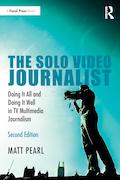I can’t stop following the Webb Telescope.
Is it me, or are we as a collective society not making a big enough deal about it?
Just before the end of 2021, a year that saw the continuation of the COVID-19 pandemic as well as numerous natural disasters, NASA launched the most powerful telescope in history into space. Over the next month, the Webb Telescope will unfold and reshape itself into an instrument that will potentially be able to explore the most observable distant galaxies in the early universe. It will begin detecting planets and gases and sending back images, according to NASA, by the summer of 2022.
As the Washington Post’s editorial board wrote in a recent opinion piece, “Now we may finally learn just how we ended up here, in 2022, nearly 13.8 billion years after the big bang.”
The audacity is astounding, especially considering it’s been less than 120 years since the Wright Brothers flew a 600-pound “airplane” into the sky that could travel no faster than 30 miles per hour.
To me, during what has been a particularly stifling period of our existence in so many ways, the telescope is a reminder of what’s possible.
As journalists and storytellers, what’s possible can be easy to forget, particularly in a lane that is currently losing much of its workforce.
I came up and remain in the world of local television news. In 2021 I saw many of my colleagues, particularly younger ones, get out of the business. Senior research professor Andrew Heyward wrote about this for Cronkite News Lab, terming it the “local newsroom recruitment crisis” and laying out in two essays how “the pipeline of talent for both sides of the camera is drying up.” He listed stagnant pay, quality of life, and the lure of related fields as reasons for the drought.
I would add one more. Most young journalists enter the field with ambition and idealism, wanting to use the power of storytelling to make some sort of impact. When they begin their careers, particularly in local TV news, they are met with little but ephemeral assignments and an overload of deadlines. Goals shift, and the ambition becomes about making it to a big market – not necessarily what to do upon arriving.
Many young adults see clearer avenues to the impact they desire, and they steer away from journalism.
So if you’re a young journalist – or, really, any journalist – you need to ask yourself: What’s possible?
That question was, in large part, what led me to change jobs for the first time in more than a decade.
Since 2009 I had worked at WXIA-TV in Atlanta, and I still hold the station and its people in the highest of regards. I had built my own storytelling segment and developed a great gig, one I would have been satisfied with continuing under the right circumstances. But early last year I learned of an opportunity to serve as a national correspondent for the E.W. Scripps company, producing stories that would be sent to all of their dozens of stations around the country. I thought extremely hard, thoroughly researched the job and team, and ultimately believed it represented a new window for my career of what’s possible.
I started with Scripps at the end of June, and I have seen those possibilities begin to form.
I have produced dozens of stories, roughly half on my own and half teaming up with a tremendous photojournalist. I have visited two hands worth of states but have never traveled so much as to compromise my responsibilities as a spouse and father, which will always be my most important jobs.
But what’s possible, in this case, is not just about reach and scope. It’s also in my stories.
I work for a segment called Two Americas, dedicating to highlighting the distinctions between “the America you know” and “the America you may not.” It would be easy to focus only on the myriad of plights, disparities, and ideological differences that permeate our 50 states. But from Story 1, we have focused on solutions. I have shined the spotlight on a woman who built a free food fridge program in Albany, N.Y.; a university in Phoenix offering college experience for those with disabilities; and examples in history where underrepresented groups have found their voice and created lasting change.
Through these stories, I am constantly reminded of not just the challenges of our world but the many extraordinary people attacking them. I am reminded of the importance of sharing those stories with our viewers and widening people’s perspectives. I am reminded of the power of what we do.
I am reminded of what’s possible.
But I try to always keep that question at the forefront, and I’d advise anyone in this profession to do the same. What, realistically, do you feel you can achieve? What got you into journalism and storytelling in the first place? Do you see a viable path to those goals – or to something better – by investing in this often-grueling profession?
If I ever feel like my own goals aren’t achievable in this field, I’ll probably start looking at others. It’s why I may lament my industry’s great resignation, but I don’t blame those resigning. I applaud them for reevaluating what’s important and taking the critical step of adjusting.
But I also still believe in what we do. It might be difficult to see sometimes, especially for those just trying to complete a given day’s stories by the always-looming deadlines. But many of us need to find our Webb Telescopes – or, at least, do everything we can to make sure they exist on the paths we’ve taken.
Because, as with the potential of Webb, what’s possible can sometimes be pretty damn amazing.
The Solo Video Journalist is available for purchase. You can find it on Amazon, Barnes & Noble, and the publisher’s web site.
Matt Pearl is the author of the Telling the Story blog and podcast. Feel free to comment below or e-mail Matt at matt@tellingthestoryblog.com. You can also follow Matt on Facebook, Twitter, and his web site, mattpearl.tv.

